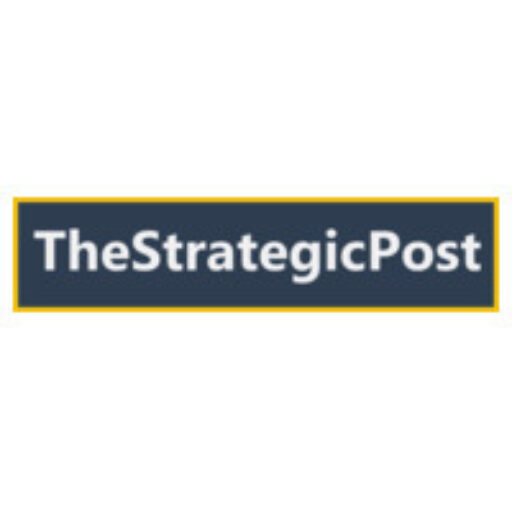- Hassan Nasrallah and Hezbollah: Understanding the Key Figures, Events, and Impact
- Introduction
- Early Life and Rise to Leadership
- Hezbollah: From Militant Group to Political Powerhouse
- Hassan Nasrallah’s Leadership Style and Ideology
- Recent Developments and Nasrallah’s Role
- The Broader Implications of Nasrallah’s Leadership
- Recent News: Is Hassan Nasrallah Dead?
- Hezbollah vs. Hamas: Differences and Similarities
- Impact of Nasrallah’s Leadership
- Final Thoughts: The Future of Hezbollah and Nasrallah
By Taha, 29-sep-2024.
Hassan Nasrallah and Hezbollah: Understanding the Key Figures, Events, and Impact
Hassan Nasrallah and Hezbollah: A Detailed Exploration of Hezbollah’s Leader and His Impact on the Middle East
Introduction
Hassan Nasrallah and Hezbollah: A Detailed Exploration of Hezbollah’s Leader and His Impact on the Middle East, the Secretary-General of Hezbollah, is one of the most influential and controversial figures in the Middle East. His leadership of Hezbollah, a Shiite Islamist militant group and political party based in Lebanon, has significantly shaped the region’s geopolitics, particularly in its ongoing conflict with Israel. Understanding Nasrallah’s background, the history and role of Hezbollah, and the current implications of his leadership offers crucial insights into the complex dynamics of the Middle East.
Early Life and Rise to Leadership
Hassan Nasrallah was born on August 31, 1960, in the Bourj Hammoud neighborhood of East Beirut, Lebanon, into a modest Shia family. His early life was marked by the chaos of the Lebanese Civil War, which deeply influenced his ideological development. Nasrallah’s interest in religious studies led him to join the Shiite Amal Movement, a group fighting for the rights of the Shiite Muslim community in Lebanon, which was often marginalized.
Nasrallah’s journey took a significant turn when he traveled to Iraq to study under Grand Ayatollah Mohammed Baqir al-Sadr, a leading Shiite cleric. This experience solidified his religious and political beliefs, aligning him with the revolutionary Shiite ideology that was sweeping through the region, particularly after the 1979 Iranian Revolution.
After returning to Lebanon, Nasrallah joined Hezbollah, which was founded in 1982 as a response to the Israeli invasion of Lebanon. The organization was heavily influenced by the Iranian Revolution, both ideologically and materially, receiving substantial support from Iran. Nasrallah quickly rose through the ranks, demonstrating exceptional leadership and strategic acumen.
Hezbollah: From Militant Group to Political Powerhouse
Hezbollah, meaning “Party of God,” was initially established as a resistance movement against Israeli occupation in southern Lebanon. Over the years, it has evolved into a powerful political entity with significant influence within Lebanon’s political system, while maintaining its militant wing. The organization’s dual identity as both a political party and a militant group has allowed it to wield power in both the domestic and regional arenas.
Hezbollah’s military operations against Israel, particularly the 2006 Lebanon War, have earned it widespread support among many in the Arab world, portraying it as a symbol of resistance against Israeli and Western influence in the region. However, Hezbollah’s involvement in the Syrian Civil War on the side of Bashar al-Assad’s regime has been more controversial, exposing the group to criticism from other factions within Lebanon and the broader Arab world.
Under Nasrallah’s leadership, Hezbollah has also expanded its social services, providing healthcare, education, and welfare programs to Lebanese Shiites, further entrenching its support base. These efforts have allowed Hezbollah to present itself not just as a militant group, but as a legitimate political and social force within Lebanon.
Hassan Nasrallah’s Leadership Style and Ideology
Hassan Nasrallah is known for his charismatic leadership and his ability to inspire loyalty among his followers. His speeches, often broadcast on television and widely disseminated, are a key tool in his leadership. Nasrallah’s rhetoric is marked by a strong emphasis on resistance against Israel and the United States, which he portrays as the primary enemies of Lebanon and the broader Arab world.
Nasrallah’s leadership style is deeply rooted in Shiite Islamic ideology, with a strong emphasis on martyrdom and sacrifice. He has consistently positioned Hezbollah as a defender of the Shiite community, not only in Lebanon but across the Middle East. This has included aligning with Iran’s broader regional strategy, which seeks to expand Shiite influence across the region, often in opposition to Sunni-majority states like Saudi Arabia.
However, Nasrallah’s leadership is not without its challenges. Hezbollah’s involvement in regional conflicts, particularly in Syria, has strained its resources and led to internal dissent. Additionally, the group’s close ties with Iran have drawn criticism from those who view Hezbollah as a proxy for Iranian interests rather than a purely Lebanese nationalist movement.
Recent Developments and Nasrallah’s Role
In recent years, Hassan Nasrallah has continued to play a central role in shaping the direction of Hezbollah and, by extension, the broader geopolitical landscape of the Middle East. His leadership has been marked by a careful balancing act between maintaining Hezbollah’s military capabilities, navigating Lebanon’s complex political landscape, and responding to the shifting dynamics of regional and international relations.
One of the most significant recent developments involving Nasrallah has been Hezbollah’s response to the normalization of relations between Israel and several Arab states, known as the Abraham Accords. Nasrallah has strongly condemned these agreements, framing them as a betrayal of the Palestinian cause and a threat to regional stability. His rhetoric has focused on the need for continued resistance against Israel, positioning Hezbollah as a bulwark against what he sees as an encroaching Zionist influence in the region.
Another key issue has been the ongoing economic crisis in Lebanon, which has exacerbated social tensions and increased pressure on Hezbollah. Nasrallah has attempted to position Hezbollah as a protector of the Lebanese people, offering social and financial support to those affected by the crisis. However, the group’s involvement in regional conflicts and its dependence on Iranian support have made this a difficult task.
The Broader Implications of Nasrallah’s Leadership
Hassan Nasrallah’s leadership of Hezbollah has had far-reaching implications for the Middle East. Under his guidance, Hezbollah has transformed from a relatively small militant group into a major regional power, capable of influencing the outcomes of conflicts and shaping the political landscape of the region.
Nasrallah’s ability to maintain Hezbollah’s relevance in a rapidly changing Middle East is a testament to his leadership skills. However, it also raises important questions about the future of the region. As Hezbollah continues to expand its influence, particularly in conflict zones like Syria and Iraq, the potential for further instability in the Middle East remains high.
Moreover, Nasrallah’s close ties with Iran have drawn Hezbollah deeper into the broader struggle between Iran and its regional rivals, particularly Saudi Arabia. This has increased the risk of sectarian conflict and has made Lebanon a battleground for regional power struggles.
Recent News: Is Hassan Nasrallah Dead?
Rumors about Hassan Nasrallah’s death often circulate, particularly during times of heightened tension between Hezbollah and Israel. As of the latest information, Hassan Nasrallah is alive, and no credible sources have confirmed his death. However, such rumors often surface due to the secretive nature of Hezbollah and Nasrallah’s own tendency to avoid public appearances, especially during periods of conflict.
Hezbollah vs. Hamas: Differences and Similarities
Both Hezbollah and Hamas are militant organizations with a strong anti-Israel stance, but they differ in their origins, goals, and operations. Hezbollah is primarily based in Lebanon and has a strong alliance with Iran, while Hamas operates mainly in the Palestinian territories, particularly Gaza, and has a closer relationship with the Muslim Brotherhood.
Hezbollah’s military capabilities are more advanced than Hamas’, largely due to Iranian support. However, both groups share similar ideological goals, such as the liberation of Palestine and resistance to Israeli occupation.
Impact of Nasrallah’s Leadership
Nasrallah’s leadership has had a profound impact on both Hezbollah and the broader Middle East. Under his command, Hezbollah has been involved in several major conflicts, including the 2006 Lebanon War with Israel. The organization has also played a significant role in the Syrian Civil War, supporting the Assad regime.
Nasrallah’s ability to maintain a balance between military resistance and political participation has allowed Hezbollah to remain a dominant force in Lebanon. However, this dual role has also led to internal and external criticism, particularly regarding Hezbollah’s involvement in Syria and its impact on Lebanese sovereignty.
Final Thoughts: The Future of Hezbollah and Nasrallah
Hassan Nasrallah remains a pivotal figure in the Middle East, and his leadership of Hezbollah continues to shape the political landscape of Lebanon and the broader region. As rumors of his death continue to emerge, it is clear that his influence, whether in life or death, will have lasting consequences for Lebanon, Israel, and the wider geopolitical dynamics of the Middle East.
For those interested in following the latest developments, staying informed through reliable news sources is crucial, as the situation in Lebanon and the surrounding region is often fluid and rapidly changing.
If you Liked Reading our Blog Read More Blogs Here and Below is the Link to our WhatsApp channel Join it for the Latest Post Updates. (Read For WhatsApp Channel Privacy and Security Here).
UseFull Resources:
| Resources | Resources |
|---|---|
| Tooldar: Tooldar | Hemingway Editor: Hemingway Editor |
| Ilovepdf3: Ilovepdf3 | Grammarly: Grammarly |
| Adorepdf: Adorepdf | Coursera: Coursera |
| Custom Design Agency: Articon Design Agency | Udemy: Udemy |
| Google: Google | Khan Academy: Khan Academy |
| Yandex: Yandex | Wolfram Alpha: Wolfram Alpha |
| Baidu: Baidu | TED Talks: TED Talks |
| Medium: Medium | Skillshare: Skillshare |
| Quora: Quora | Canva: Canva |
| Duolingo: Duolingo | Figma: Figma |
| Nerdfitness: Nerdfitness | Trello: Trello |
| DeepL: DeepL | Notion: Notion |
| LinkedIn: LinkedIn | Asana: Asana |
| Stack Overflow: Stack Overflow | Mailchimp: Mailchimp |
| GitHub: GitHub | Zapier: Zapier |
Note : These Above Resources Are just for Educational and ease of use Purposes we neither Endorse them, they were working at the time of sharing.
.Disclaimer: The information presented in this blog is for educational and informational purposes only and should not be considered financial, Political, or cultural advice. All efforts have been made to ensure the accuracy of the content at the time of writing.
Think We Missed Something?
If you notice an error or have a suggestion, we encourage you to submit a correction. Help us keep our information up-to-date and reliable!











